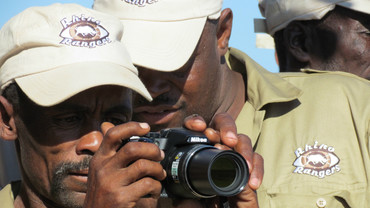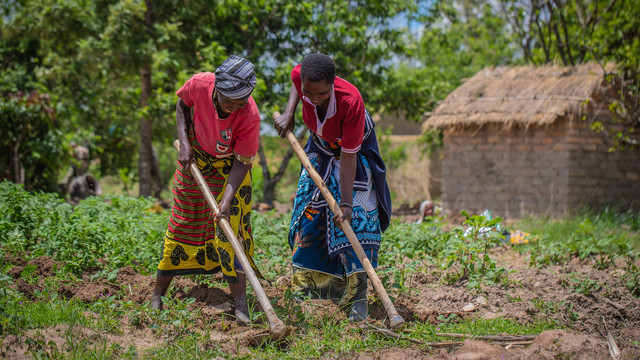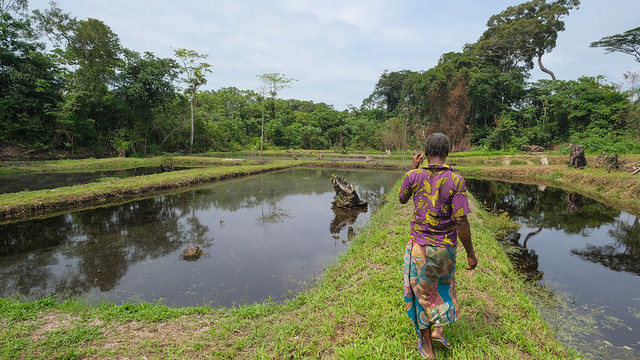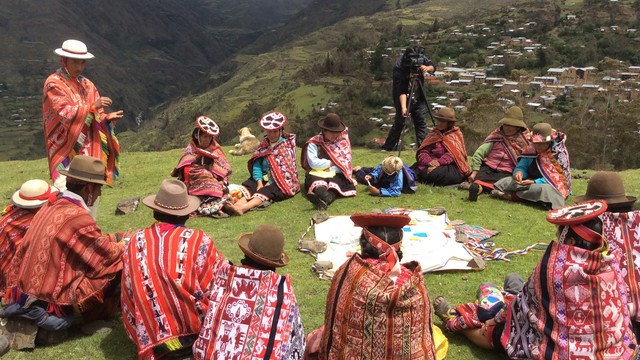Protecting wildlife with local solutions: putting learning into practice
For several years IIED and partners have been working to strengthen the role of communities in interventions to tackle illegal wildlife trade. Olivia Wilson-Holt discusses what the team has learned and how this urgently needs to be put into practice.


Crocodile community wardens on patrol (Photo: copyright Pablo Sinovas, FFI)
Starting in June 2018 the Learning and Action Platform (LeAP) for Community Engagement Against Illegal Wildlife Trade (IWT) project was an IIED-led project funded by the UK government’s Illegal Wildlife Trade Challenge Fund.
Partners were the International Union for Conservation of Nature Sustainable Use and Livelihoods Specialist Group (IUCN SULi), Tanzania Natural Resources Forum (TNRF) and Zambia Community-Based Natural Resources Management (CBNRM) Forum.
Building the evidence base of community-driven approaches
One key issue that the LeAP project aimed to address was the lack of knowledge of how best to design and implement locally-based approaches to reduce IWT. In October 2018 the People not Poaching platform was launched to build this evidence base by collecting and disseminating examples of community-driven, anti-poaching interventions.
There are now 117 case studies on the portal, across 54 countries and targeting 168 species from pangolins to whale sharks.
Earlier this year we held three regional workshops with case study representatives from across Southeast Asia, South America and sub-Saharan Africa to discuss and consolidate the key lessons learned from the approaches showcased on People not Poaching.
Wildlife crime is a complex issue, and the variety of case studies on the platform illustrate that there is no one-size-fits-all approach. However, these discussions showed that there are many commonalities between the factors that have led to, or limited, success for these community-focused anti-IWT projects.
What have we learned?
Workshop outputs were distilled into eight overarching lessons, which highlight important messages for organisations involved in funding, designing and implementing interventions to reduce IWT.
Before projects are designed, it is fundamental to recognise community rights to make decisions about, and benefit from, wildlife. While this is well-recognised, a lack of rights over resources and land remains a barrier to effective community-based wildlife management, and can incentivise engagement in IWT.
This means it is important to explore factors that motivate local people to participate in IWT – which can be varied and misunderstood. For example, human-wildlife conflict can drive negative attitudes towards wildlife, leading to retaliatory killings and collusion with poachers. Interventions must therefore ensure that they increase benefits and reduce costs from wildlife to incentivise support for, and participation in, conservation efforts.
The design of any intervention should start by listening to local needs and priorities. This is to understand and adapt approaches based on the local context, so that they respect and incorporate existing community structures and norms, building on them wherever possible.
Longer-term projects are also more likely to lead to trusted relationships between conservation practitioners and Indigenous Peoples and local communities (IPLCs), which should be developed over time from low key, but frequent, engagement.
Supportive partnerships that harness expertise from across different sectors are a key factor for success. However, community-based organisations and the people they represent should have overall responsibility for project design and implementation, with wildlife management structures devolved to the lowest level.
Although there is broad agreement that to be successful anti-IWT interventions must engage IPLCs, more needs to be done to ensure that the wellbeing and human rights of local people are not compromised, either by project activities or through a lack of government will to protect environmental defenders.
Conservation organisations must also acknowledge that past and present grievances, for example due to dispossession of traditional lands or the use of militarised conservation tactics, are likely to result in deep-rooted mistrust.
The final lesson – which is important for funders in particular – is to better recognise and support locally-led action to reduce IWT by removing the barriers that inhibit IPLC participation and to develop mechanisms for getting money down to the local level.
Same story, different ending?
It is important to highlight that many of these lessons are not new, nor can they be considered specific to IWT, but instead reflect broader lessons from community-based conservation approaches. Many have also been highlighted in different ways throughout the LeAP project – for example the importance of decreasing the costs of living with wildlife at the IIED-hosted webinar on human-wildlife conflict, and as a key message from the National Dialogue on Communities and IWT held by our partners TNRF in Tanzania.
Similarly, ensuring local rights and ownership over wildlife, and a say in management decisions, were key themes discussed at both our ‘Community Voices’ events in London and in Lima, and also at the National Consultative Dialogue hosted by Zambia CBNRM Forum.
The need to build trusting relationships was illustrated throughout the examples presented at our webinar on community rangers, and finally in March this year a Q&A with Zakaria Faustin (TNRF) and Rodgers Lubilo (Zambia CBNRM Forum), showed the importance of multi-stakeholder partnerships.
But what still remains is for these messages to be fully integrated into the funding, design and implementation of future anti-IWT interventions, as well as into policymaking. This is because despite commitments made at international and national level, local solutions to tackling IWT remain overlooked and under-resourced.
We have the evidence of what does, and doesn’t work, and why. So it’s time to take these lessons on board and put what we now know about the value and effectiveness of community-driven approaches to tackling wildlife crime into practice.






